2022-23 NBA End-of-Season Awards: What do you do with Giannis, Jokić, Embiid MVP race?
The end of the 2022-23 NBA regular season and the onset of the play-in tournament can mean only one thing: I am no longer allowed to put off thinking about year-end awards.
The powers that be at the NBA, in their infinite and inarguable wisdom, have once again given me an official ballot. Here’s how I filled it in:
Most Valuable Player
1. Joel Embiid, Philadelphia 76ers
2. Nikola Jokić, Denver Nuggets
3. Giannis Antetokounmpo, Milwaukee Bucks
4. Jayson Tatum, Boston Celtics
5. Donovan Mitchell, Cleveland Cavaliers

Not going to lie: Sliding Antetokounmpo — the best player on the best team in the NBA, and my pick last season — down to third makes me feel a little queasy.
Embiid and Jokić played more games, and between 250 and 300 more minutes. Embiid, winner of a second straight scoring title, holds the edge in points; Jokić, who finished decimal points away from becoming the third player ever to average a triple-double, holds a huge advantage in playmaking. Both have significant edges in shooting efficiency, too, thanks to Giannis’ janky shot leading to a 27.5% mark from 3-point range and a 64.5% success rate on free throws.
Embiid and Jokić led top-five offenses; Antetokounmpo’s Bucks finished 13th. And while Milwaukee’s vise-grip defense was better than either Philly’s or Denver’s, Antetokounmpo shares credit for that with bookend stoppers Jrue Holiday and Brook Lopez — without whom the Bucks’ D was closer to top-10ish, even with Giannis on the floor.
Antetokounmpo had an incredible season; he remains, for my money, the best player in the sport, and is the member of this bunch I’d most trust to win me a playoff series. Judging the regular season as a whole, though, I think Embiid and Jokić have better cases this time around.
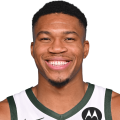
The major availability and advanced statistical gaps that have favored Jokić in recent years have narrowed. Jokić played three more games and 39 more minutes than Embiid, down from six and 179 last season and 21 and 903 two years ago. And while Jokić leads the pack in a number of advanced metrics — including value over replacement player, player efficiency rating, win shares, box plus-minus, estimated plus-minus and FiveThirtyEight’s RAPTOR — Embiid ranks second or third in almost all of those, and has overtaken Jokić in a couple of others, like ESPN’s real plus-minus and Kostya Medvedovsky’s DARKO skill projections.
Jokić's Nuggets are the West’s No. 1 seed, while Embiid’s 76ers finished third in the East. Philly (54-28) finished with a better record than Denver (53-29), though, according to Cleaning the Glass, which cuts out the fat of garbage-time production, the Sixers had a better point differential, by virtue of their superior defense — which Embiid captains.
But those numbers invite greater scrutiny, too. The Sixers went 11-5 without Embiid, outscoring opponents by 7.2 points per 100 possessions in the games he’s missed, according to Statmuse — a net rating that would’ve led the league over the course of the full season. Denver, meanwhile, was 5-8 with Jokić in street clothes, getting beat by 3.9 points-per-100 — near Portland territory, which is a pretty ghastly place to be.
Focusing solely on their on-court impact, the Nuggets blitzed opponents by 13.2 points-per-100 in Jokić's minutes, a hefty advantage over Philly’s plus-8.9 points-per-100 with Embiid. That gulf stems from Denver’s offense being all-time-scorching whenever Jokić is at the controls, no matter which of his co-stars are on the pine, compared to merely near-best-in-the-league-caliber for Philadelphia in Embiid’s minutes, even if the Sixers’ other top scorers are resting.
What allowed that gap to open, though, was the fact that the Nuggets’ defensive rating with Jokić on the floor (112.2 points allowed per-100) was essentially the same as the Sixers’ with Embiid in the middle (112.1-per-100) … which is pretty eyebrow-raising.

That number points toward the less-obvious value that Jokić can bring on the defensive end — as an anticipatory deflection-and-steal creator, as a defensive rebound magnet who has hoovered up more than 30% of opponents’ misses in each of the past two seasons, and as just flat-out Big Dude Who Can Stand in the Way Near the Rim.
It also, though, feels a bit like a trick of the light: a schemed-up solution requiring a lot of work from the likes of Aaron Gordon, Kentavious Caldwell-Pope and an improved Michael Porter Jr. to mitigate Jokić's shortcomings as a rim protector and a liability in space to be attacked on the defensive end, rather than one to be avoided at all costs. Like, say, Embiid, whose presence effectively renders the paint a no-fly zone — opponents take just 30.6% of their shots at the rim when he’s patrolling, a top-five level — and who is much scarier and stingier defending on screens and when switched out onto perimeter players in isolation.
So: What do you do with all that?
Do you give Jokić the defensive credit the numbers say you should, despite what your eyes tell you about the chasm between him and Embiid, and between their respective teams, on that end? Does Jokić rise in your estimation because his team performed worse in the games he’s missed than the Sixers did without Embiid? Is that an argument against Embiid’s relative value — or for the value of, say, Tyrese Maxey, who averaged 29 a night on 50/44/85 shooting when the big fella was unavailable, a higher level production than Denver’s supporting cast managed?
Do you privilege Jokić's superior scoring efficiency — 67.5% inside the arc, a historically obscene .701 true shooting percentage — over the fact that Embiid also maintained Steph Curry-level efficiency while posting a usage rate nearly 10% higher than Jokić's? Does Jokić's every-possession control as Denver’s lead ball-handler and the league’s leader in touches per game, all tied to his overwhelming distributive work to drive an all-time-great-level offense when he’s at the controls — only Trae Young created more points via assist this season — counterbalance Embiid’s edge as an individual scoring hub on a this-season-great-level offense?
I can get that argument. This year, though, I don’t think so.
I think Embiid has hit a level this season — a season, you might remember, that started out pretty rocky due to a bout with plantar fasciitis — that’s higher than anything we’ve seen from him before. The much-ballyhooed migration to the nail, combined with continued improvements as a facilitator out of double-teams and the refinement of the damn-near-automatic free-throw-line jumper that fuels the league’s most lethal two-man game, has turned him into some unholy amalgam of Lakers Shaq and Kevin Durant. And he’s managed that ascension while remaining one of the league’s most disruptive defenders — a level of every-possession menace and impact that Jokić just doesn’t reach.
The final table, to me, is the same this year as it’s been the last two. This time around, I think Embiid deserves to sit at the head. So let’s acknowledge him.
It is a testament to the age of superheavyweights we’re living in that Tatum can average nearly 30-9-5 on .607 true shooting for a 57-win team with the NBA’s best net rating, all while playing excellent defense across multiple perimeter positions, logging more minutes than all but a handful of players in the league, and becoming one of the most complete players in the NBA … and I can’t really see him sniffing a top-three finish in MVP voting. Alas!
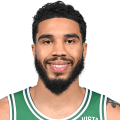
Rounding out the top five: Mitchell, who came to Cleveland in a summertime blockbuster and proceeded to play the best basketball of his career, fitting in snugly alongside Darius Garland in a stellar backcourt that’s backstopped by the elite big-man tandem of Jarrett Allen and Evan Mobley. Without Mitchell, a healthy Cleveland team probably would’ve been good; his arrival, though, vaulted the Cavs past 50 wins without LeBron James for the first time since 1993, cemented home-court advantage in the first round of the playoffs, and gave them the kind of full-force offensive weapon that can go toe-to-toe with the beasts of the East come the playoffs.
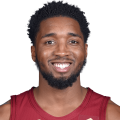
Just missing the cut: Domantas Sabonis and De’Aaron Fox, the dual forces behind Sacramento’s remarkable turnaround … and that’s pretty much it. A ton of the best players in the world missed too much time, and saw their teams slink down toward the mushy middle of the standings, too much to really get into the race. And shouts out to Shai Gilgeous-Alexander, Luka Dončić and Damian Lillard for their incredible individual production, but landing below .500 lands you below the ballot.
Defensive Player of the Year
1. Jaren Jackson Jr., Memphis Grizzlies
2. Brook Lopez, Milwaukee Bucks
3. Evan Mobley, Cleveland Cavaliers

The case against Jackson starts with total workload. Thanks in large part to offseason foot surgery that cost him the first month of the season, Jackson played 63 games and 1,787 minutes — far fewer than Lopez, Mobley, Bam Adebayo and most other serious candidates for this award. But I voted for Adebayo last year despite him logging fewer minutes than his competition, because I thought the exemplary work Bam had done when he was on the court still merited the recognition. I feel the same way here.
While Jackson didn’t transform Memphis’ defense all by himself — as I wrote at the time — he absolutely exploded upon his arrival, swatting damn near everything in sight and playing the largest role in what had been the NBA’s No. 17 defense becoming its best over the final 68 games.
Jackson led the league in blocks per game and block percentage, rejecting 9.6% of opponents’ 2-point shots when he’s on the floor — the 12th-highest rate since the NBA started tracking blocks in 1973-74 — and tying with Nic Claxton for the lead in total “stocks” (steals plus blocks) despite playing in 13 fewer games. Opponents shot just 46.9% against Jackson at the rim, according to Second Spectrum — the best percentage among 100 defenders to contest at least 200 point-blank shots. Expanding out to the rest of the court, Jackson held opponents to minuscule 37.4% shooting when he was the closest defender — the second-lowest mark among 222 players to contest 500-plus attempts — and about 8.2% below their expected effective field goal percentage on those attempts, which was the largest differential in the NBA.
He maintained that elite level of disruption whether playing power forward alongside Steven Adams, Brandon Clarke and Xavier Tillman or sliding over to play center himself. In Jackson’s minutes at the 4, Memphis allowed 108.5 points per 100 non-garbage-time possessions; that would be the best defense in the league. In his minutes at the 5, the Grizz allowed … 108.9 points-per-100, which would also be the best defense in the league. And even in the midst of a maelstrom in Memphis over the last two and a half months — losing Adams and Clarke to injury, the whole Ja Morant saga, three separate suspensions for Dillon Brooks — the Grizzlies remained a top-eight defense … that clamped down at a best-in-the-league rate whenever JJJ was on the floor.
JJJ can unfurl his 7-foot-5 wingspan to fall back and wall off the paint in drop coverage, use his quickness and anticipation to switch screens, and operate as the predator rather than the prey when drawn out into deep water; Jackson allowed just 0.884 points per play in isolation this season — 22nd out of 194 players to guard at least 100 isos, according to Second Spectrum. That ability to range from solid to spectacular across a variety of schemes and approaches is the hallmark of the modern defender, and while Jackson might lack the across-the-board polish of an Adebayo or the genius-level processing and problem-solving of Draymond Green, he showed this year — still just his age-23 season — that he’s got enough versatility to allow him to wreak a level of havoc on opposing offenses that I don’t think any other player reached.
I opted for peak disruption atop my ballot, but Lopez has a fantastic case in his own right as the metronomically consistent back-line anchor of a Bucks defense that was elite from start to finish.
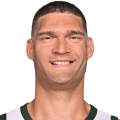
Entering the season healthy after missing much of last year following back surgery, Lopez played nearly 600 more minutes than Jackson. He also committed nearly two fewer fouls per 100 possessions, which helped ensure he could be on the court much more often to serve as the linchpin of Milwaukee’s trademark drop coverage — only the Knicks played “soft” pick-and-roll coverage more frequently than the Bucks, and nobody allowed fewer points per chance on those plays — and continue his somewhat remarkable late-career evolution into one of the league’s top interior deterrents. Lopez led the NBA in total blocks, tied for second in blocks per game, and contested nearly 450 more shots than second-place Claxton; Milwaukee allowed 9.3 fewer points-per-100 with him manning the middle. Any team with Antetokounmpo and Holiday on it would have a good defense. Lopez, quietly, made it a truly great one.
Mobley slots in third by virtue of checking a lot of the same boxes as Jackson and Lopez. Like JJJ, he’s mobile and versatile enough to blow up possessions by switching onto any offensive player and smothering them in space, and capable of providing plus defense at either the 4 or the 5. Like Lopez, he’s phenomenal at contesting without fouling, and providing the sort of perpetually there-if-you-need-him help defense that serves as a security blanket for his teammates. (He also played a lot more than both of them, finishing ninth in the league in total minutes.)
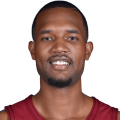
As a rookie, it was reasonable to question whether Mobley was driving Cleveland’s top-flight defense, considering the Cavs fell back toward Earth when he played without interior partner Jarrett Allen. This season, though, they still defended at a top-four level when Mobley flew solo. He’s growing in leaps and bounds, seemingly in real time; a third-place finish might be the lowest he sees in DPOY balloting for years to come.
Just missing the cut: Adebayo, Green, Claxton, Holiday, Alex Caruso, Anthony Davis.
Rookie of the Year
1. Paolo Banchero, Orlando Magic
2. Jalen Williams, Oklahoma City Thunder
3. Walker Kessler, Utah Jazz
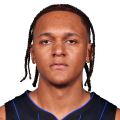
Williams and Kessler both turned heads with their play down the stretch, with the former taking on a larger offensive role for an Oklahoma City team mounting a serious play-in push and the latter cementing himself as a defensive cornerstone on a Jazz squad that hung around the postseason conversation a hell of a lot longer than most anticipated. (I’ve written about both recently.) As impressive as they’ve been in complementary roles alongside All-Stars in Shai Gilgeous-Alexander and Lauri Markkanen, though, I personally found it more impressive that Banchero walked into the NBA as the No. 1 pick in the 2022 NBA draft and immediately established himself as a legitimate No. 1 option in his own right.
Heading into this season, only five players since the ABA/NBA merger had averaged better than 20 points, six rebounds and three assists per game in their rookie seasons: Walter Davis, Larry Bird, Michael Jordan, Blake Griffin and Luka Dončić. Banchero’s the sixth. At 6-foot-10 and 250 pounds, he’s built for speed and conflict, maneuvering around the court like a war rig and bouncing off defenders on his way to either the basket or the free-throw line; he’s already near the top 10 in the NBA in free-throw attempt rate, behind only “get hacked while trying to dunk” centers and some of the best offensive players in the world (Giannis, Luka, Embiid, Gilgeous-Alexander, Jimmy Butler, Austin Reaves).
Banchero combines that drive for contact and knack for shot creation with an ahead-of-schedule ability to facilitate. Run the numbers on players Paolo’s age with that mixture of usage rate, assist percentage and low turnovers, and you’ll come back with an awfully impressive list of predecessors.
I’m more encouraged by those indicators of stardom than I am discouraged by Banchero’s undeniably shaky shooting: just 47.1% inside the arc, 29.8% beyond it, underwhelming efficiency from all areas of the court. For one thing, I’m betting that those numbers will tick up after a summer of development work and if — hopefully when — Orlando’s braintrust imports some shooting to allow him to play in less cramped confines. Even in less-than-ideal circumstances, though, the Magic had a sneakily strong season, bouncing back from a dismal 5-20 start to play above-.500 ball for the final four months with Banchero as the central figure in the offense. After a long fallow period post-Dwight Howard, there are finally some things worth getting excited about in Central Florida. Banchero’s at the top of the list.
Just missing the cut: Keegan Murray, Benedict Mathurin, Jaden Ivey.
Coach of the Year
1. Mike Brown, Sacramento Kings
2. Mark Daigneault, Oklahoma City Thunder
3. J.B. Bickerstaff, Cleveland Cavaliers
Brown took over a Kings team that hadn’t made the playoffs, or even won 40 games, since 2006, and promptly authored a worst-to-first turnaround that snapped the longest postseason drought in NBA history. Long touted for his defensive bona fides, Brown weaved together aspects of the offensive principles he learned coaching with Gregg Popovich and Steve Kerr to create the league’s No. 1 offense — a whirling dervish of dribble handoffs, backdoor cuts, skip passes, dribble drives, ball movement, body movement and let-’er-rip 3-pointers.
He empowered Fox and Sabonis to lead, setting them up for All-Star seasons. He poured confidence into youngsters like Murray and Davion Mitchell, putting them in positions that best leveraged their strengths. He gave a franchise that had been lost in the NBA wilderness for nearly two decades a pulse, a new north star, a hard-charging, free-wheeling and boisterous identity; I wouldn’t be surprised if this one’s unanimous.
If it’s not, it might be because Daigneault — who, let’s be honest, most NBA fans couldn’t pick out of a lineup, and whose last name many people who cover the NBA still might not know how to pronounce (DAYG-nalt, say the Thunder) — has done such a tremendous job in getting the second-youngest team in the league back into the postseason well ahead of schedule.
Having a transcendent offensive talent like Gilgeous-Alexander makes everything easier, but when you get that rising superstar to buy in on defense — which Daigneault has, with SGA now being one of fewer than 20 guards ever to average one block and one steal per game for a full season — it gets everybody else on board, too. When the curtain fell on an era that saw 10 playoff appearances in 11 years, with all the stars that Sam Presti had drafted and acquired finally scattered to the four winds, the Thunder gave the keys to their G League coach in the belief that he could develop a new generation of talent. So far, so good.
I could’ve gone a lot of ways with the third slot, but I chose to give the nod to Bickerstaff, who spent damn near two decades as an assistant, associate head coach and occasional interim choice before finally and firmly getting his shot in Cleveland. All he’s done since stepping into the lead role with the Cavs: build arguably the NBA’s best defense, help turn Allen and Darius Garland into All-Stars, set Mobley on the course to superstardom, and seamlessly integrate Mitchell into an existing infrastructure, allowing an All-Star offensive engine to flourish without cannibalizing the touches, opportunities and good vibes of others. I’m guessing all that isn’t as easy as he made it look in steering Cleveland to 51 wins and the East’s No. 4 seed.
Just missing the cut: Joe Mazzulla, who took over for Ime Udoka in a shocking shift on the eve of training camp and never looked back; Taylor Jenkins, who navigated the midseason Morant mess and myriad injuries and still got Memphis to the No. 2 seed in the West; Mike Budenholzer, who had to juggle a ton of injury absences and lineup uncertainty but kept the Bucks on the path to being the best team in the NBA; Tom Thibodeau, who thumbed his nose at years of critiques of his rock-fight rigidity by fashioning the Knicks into the NBA’s No. 2 offense partly by benching some trusted veterans and elevating his youngsters; Jacque Vaughn, who, like Mazzulla, took over a team in turmoil under some significantly less-than-ideal circumstances and, like Mazzulla, helped shepherd that team to the playoffs … despite, unlike Mazzulla, watching his two best players get traded away midseason.
Sixth Man of the Year
1. Immanuel Quickley, New York Knicks
2. Malcolm Brogdon, Boston Celtics
3. Bobby Portis, Milwaukee Bucks
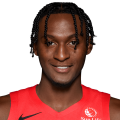
Brogdon was sensational in his first season in Boston. He offered an efficient source of offense, putting up just under 15 points and four assists per game on 48/44/87 shooting splits, and a steady set of hands off the bench, with a 2.5-to-1 assist-to-turnover ratio. He averaged more drives to the basket per game than any Celtic save Jaylen Brown, bringing some needed north-south oomph to a Boston team that ranked near the bottom of the league in generating shot attempts at the rim. He was money playing off the ball, too, drilling 44.2% of his catch-and-shoot 3-pointers. Between Brogdon’s malleability on offense, his ability to fit into Boston’s switch-heavy scheme on defense, and the fact that the Celtics had a (slight) positive net rating in the limited minutes he played without either Tatum or Brown on the floor — after Boston got absolutely rocked in no-Jays minutes last season — he’s got a strong case; I wouldn’t be surprised if he winds up winning.
But while Brogdon’s box score numbers were better, I didn’t think any reserve in the league this season drove winning for his team more effectively than Quickley, whose ability to organize the Knicks’ defense and ignite their offense was one of the key elements in New York’s massive turnaround from scuffling below .500 early in December to being one of the NBA’s best teams for the last four months.
Some folks have pointed to the fact that Quickley started 21 games, and produced a ton in those starts — 22.6 points, 5.4 rebounds and 5.1 assists per game on 47/40/85 shooting splits — as an an indication that he’s not really a “sixth man” in the same traditional sense as Brogdon, who made zero starts and produced purely in a reserve role. Setting aside the question of whether stepping into the starting lineup because a starter is unavailable is or is not “traditional” sixth-man business, it’s worth noting that if you strip those starts out and focus just on the 60 games in which Quickley came off the bench, the Knicks outscored opponents by 7.6 points-per-100 with him on the floor — the best net rating of any big-minutes reserve in the league.
Brogdon gets to the basket more often, but Quickley finishes better once he’s there, shooting 67% at the rim and 50% from floater range compared to 56% and 46% for the former Buck and Pacer. Quickley’s a better and more versatile defender, providing plus on-ball work at both guard spots, as well as a knack for communicating coverages and putting out fires before they can spark with his rotations and awareness. New York allowed 12 fewer points-per-100 with Quickley on the floor than off it this season, the largest on/off differential of any player to log at least 1,000 minutes — a level of defensive tightening that was not driven by the starters.
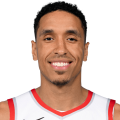
Quickley has fit snugly next to Jalen Brunson and Julius Randle, but has also increasingly helped keep New York afloat without either. While the Knicks had a (slight) negative net rating in the minutes Quickley played without the two stars over the full season, some of those lineups suffered from the presence of players who’ve since been excised from the rotation. Filter out Cam Reddish, Derrick Rose and Evan Fournier — whose moves to the bench helped kickstart New York’s December revival — and the Quickley-led units are plus-6.5 points-per-100 in more than twice as many possessions played as Boston’s Brogdon-no Jays groupings.
The engine-room work that Quickley did to erase deficits or extend leads after checking in for Brunson in the dead of winter wasn’t as highlight-reel-ready as the 30-plus-point explosions he authored in Brunson’s place in early spring. They were just as vital to turning the Knicks into the team they became, though — and worthy, I think, of recognition as the league’s top reserve this season.
Portis deserves recognition, too — for leading all reserves in rebounding, for posting a league-high 23 double-doubles off the bench, for providing instant offense in the second unit (12.6 points in 24 minutes per game off the bench, shooting 50% from the floor) and being a stabilizing force when injuries pushed him into the starting five (17.4 points, 10.8 rebounds, .599 true shooting in 22 starts). His ability to slot in as a floor-spacing 4 next to Lopez in more traditional double-big lineups, or at the 5 alongside Giannis when the Bucks need a little more offensive juice, has made him a vital piece of Milwaukee’s frontcourt rotation — one of the many reasons why Mike Budenholzer’s team enters the playoffs with a strong shot to make it back to the NBA Finals.
Just missing the cut: Norman Powell, Malik Monk, Tyus Jones.
Most Improved Player
1. Shai Gilgeous-Alexander, Oklahoma City Thunder
2. Lauri Markkanen, Utah Jazz
3. Jalen Brunson, New York Knicks
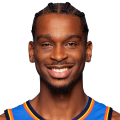
I tend to view MIP through the lens that the biggest, most meaningful and hardest improvement an NBA player can make is that final leap to All-Star/All-NBA status. It’s why I voted for Luka in 2020, for Julius Randle in 2021 and for Ja Morant last year … and it’s why I’m pulling the lever for SGA now.
Gilgeous-Alexander made it very clear very early this season that he’d made the superstar leap, and he just kept going, not only leading Oklahoma City back to the postseason, but finishing fourth in the league in scoring in the process. He’s played since the season’s opening tip less like someone intent on proving he’d arrived than like someone utterly unworried whether or not you had yet realized what he knew for certain: that, as far as he was concerned, he’d already been there, going heads up with the best of the best without blinking or flinching. The postseason is made for preternaturally confident young men whose hearts pump slow and steady in the guts of the game; I’m very much looking forward to seeing what our young Canadian friend can cook up in his return to games of consequence.
Markkanen won’t be joining SGA in postseason play, as Utah finally steered into the skid in the final two weeks of the season, but he does join Shai on my MIP ballot. He nearly topped it, to be honest, if only because while I thought maybe SGA could become something like what he’s shown this season — you could kind of see the first seeds of it late last season — I definitely didn’t think Lauri could be this: a big-wing scorer, a No. 1 option, an absolute monster who averages 25.6 points per game while shooting 70% at the rim, 47% from midrange, and 39% from long distance on the highest usage of his career.
The list of players with a usage rate and true shooting percentage as high as Markkanen this season features All-NBA mainstays and league MVPs. This, I must admit, is not the kind of company I thought Markkanen would be keeping back before the start of the season, but head coach Will Hardy gave the 7-footer the freedom to expand his game beyond just floor-spacing — more pick-and-roll ball-handling, more working either side of dribble handoffs, more setting and sprinting off off-ball screens, more mismatch hunting in the post and in isolation — and Markkanen responded with a career season that established him, six years and three teams later, as a player that an organization can build around.

While I’m handing out mea culpas for not seeing a massive spike in production coming, allow me to extend one to Brunson, who calmly collected any extant doubts about how he’d fare as the lead ball-handler in New York after getting to spend his first four seasons playing off Dončić, unleashed a series of pivots and feints to shake off the haters, and deposited those doubts directly into the nearest trash can.
Brunson took and made 3-pointers at career-high clips, dramatically increased his free-throw rate, reduced his turnovers, turned into a crunch-time assassin from midrange, and effectively performed an interstate vibes transplant from Big D to the Big Apple. The Mavericks going from the Western Conference finals to missing the postseason entirely isn’t solely about Brunson’s absence, and the Knicks going from missing the postseason entirely to the No. 5 seed isn’t solely about Brunson’s arrival. If you’re looking for explanations for both, though, there are worse places to start than with the best free-agent signing of the offseason.
Just missing the cut: Tyrese Haliburton, JJJ, Claxton, Anthony Edwards, Mikal Bridges, Trey Murphy III.
Clutch Player of the Year
1. De’Aaron Fox, Sacramento Kings
2. Joel Embiid, Philadelphia 76ers
3. DeMar DeRozan, Chicago Bulls
Fox led the NBA in points scored when the score was within five points in the final five minutes. Of the 21 players who scored at least 100 crunch-time points, only Bradley Beal shot a higher percentage on those looks than Fox, who took more than twice as many attempts as Beal.
Factor in other things you can do in the clutch to help determine an outcome — draw fouls, grab rebounds, dish assists, commit (or avoid) turnovers, etc. — and Fox stayed planted at the top of Mike Beuoy’s clutch win probability added tracker at Inpredictable. The Kings have the best clutch offense in the league by friggin’ 10.2 points-per-100, and Fox is where the buck stops on the lion’s share of those possessions. I have no idea if this award will be close in the years to come, but the first winner feels like a pretty easy call to me.
Just missing the cut: Haliburton, Jimmy Butler, SGA.


